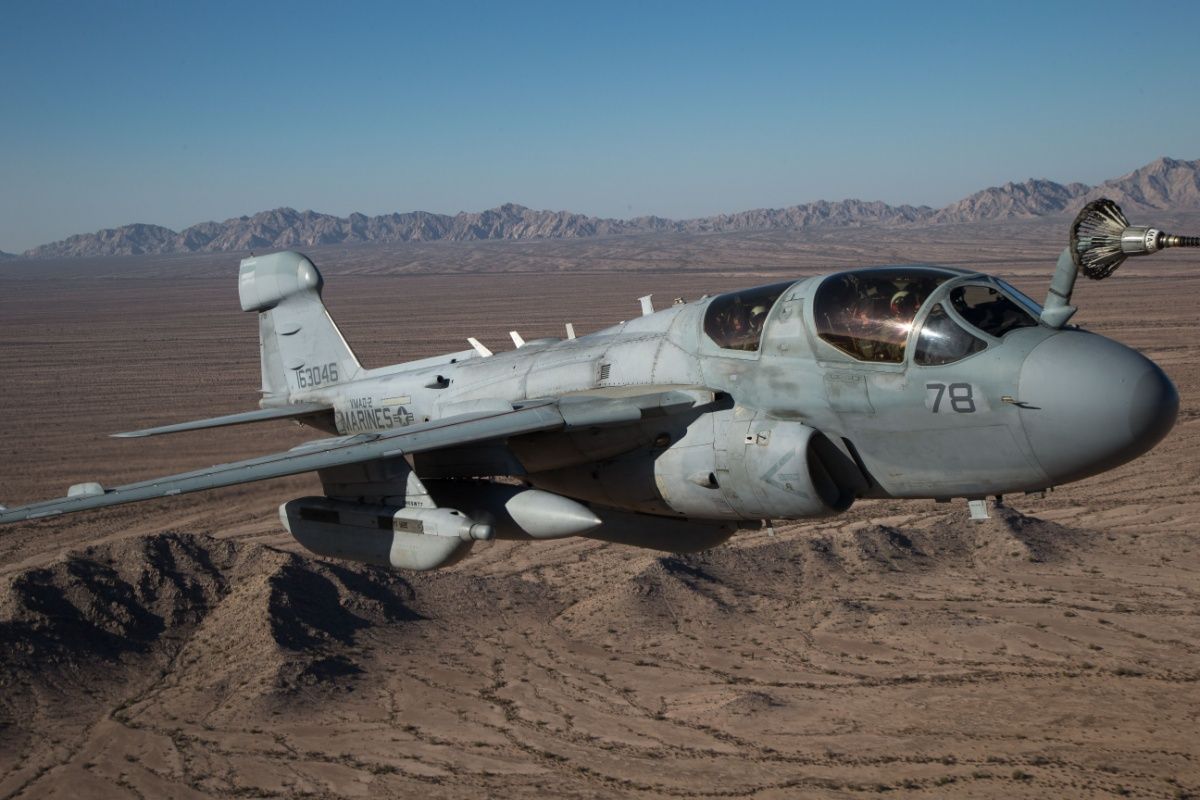Summary The EA-6B Prowler was the first US aircraft designed solely for electronic warfare. Prowlers flew combat missions in Vietnam, Iraq, and more without losses. It carried AGM-88 HARM missiles to jam enemy radar systems effectively.
The US Air Force and US Navy have long excelled at electronic warfare. In the Air Force, electronic warfare is provided by the EC-130H Compass Call (being retired and replaced by the little-reported EA-37B aircraft ) and the electronic warfare F-16s. The Navy (and Marines) once relied on the EA-6B Prowler, although these have been retired and replaced with the EA F/A-18G Growler.

For years, the EA-6B Prowler sat at the cutting edge of EW and was used in conflicts around the world. The first US military aircraft specifically designed for EW The Northrop Grumman EA-6B Prowler was built from the carrier-capable A-6 Intruder and was used by the Marines and Navy. At first, the services used the EA-6A, which was later replaced with the more advanced EA-6B.
The National Air and Space Museum states, " While the Navy designated the new airplane the EA-6B, it shared little in common with either the EA-6A or the basic A-6 beyond general appearance. " "Prowlers flew with Navy and Marine squadrons from 1970 to 2019, also protecting Air Force airplanes from enemy attack. When Congress lifted a ban in 1993 on women in combat aircraft, Prowlers were among the first with women pilots and crew.
No Prowlers were lost in combat." - National Air and Space Museum The EA-6B's development began in 1966 and remained in Navy service until 2015 and Marine service until 2019. It was the first military aircraft in the US specifically designed for tactical electronic warfare (the jamming of enemy radar and communications).
By conducting SEAD (Suppression of Enemy Air Defense), the Prowler paved the way for other fighter aircraft to carry out strike and bombing missions. EA-6B Prowler: Developed from: A-6 Intruder airframe Crew: 4 (one pilot, three electronic countermeasure officers) Cruise speed: 481 mph Max take-off weight: 61,500 lbs Service ceiling: 37,600 feet Powerplant: 2 × Pratt & Whitney J52-P-408A turbojet engines The Prowlers were first used over Vietnam and went on to fly combat missions over Iraq, Bosnia, Yugoslavia (Serbia), Afghanistan, and Syria. Since the Vietnam War, there has not been a major US combat mission without EW support.
The US Air Force is working to update all its platforms in three hours or less because "data is the weapon." EA-6B Prowler weapons While EW traces its roots back to World War II, it really came into its own during the Cold War. The explosion of increasingly advanced Soviet surface-to-air missiles (SAMs) and other advanced air defense capabilities that operated using radars made EW all the more important.
According to the National Air and Space Museum, the Prowler bristled with more than 30 antennae around the aircraft (these were used to detect radio and radar signals). The EA-6B had one pilot and three electronic countermeasures officers. EA-6B Prowler weapons: Hardpoints: 5 (4 under wings and 1 under fuselage) Missiles: Up to 4 AGM-88 HARM Anti-radiation missiles Self-defense: AN/ALE-43(V)1&4 Bulk Chaff Dispensing System pod Targeting laser: AN/AAQ-28(V) Litening targeting pod (only Marines) The Prowler flew armed with Raytheon high-speed anti-radiation missiles (AGM-88 HARM).
The HARMs were used to destroy land-based and seaborne radar-directed air defense systems. In other words, when a radar works, it lights up the electromagnetic spectrum like a beacon. The HARM is programmed to home in on the source of the beacon and destroy the radar.
While the Prowler could carry four HARMs, it typically carried two. Later, Prowlers carried the Northrop Grumman LITENING AT targeting pod. Two of these continue to serve in the military for nearly five decades.
Countermeasures & later Increased Capability III The Prowler was able to carry up to five ALQ-99 pods. The ALQ-99 pod is an airborne electronic warfare system that was carried by the Prowler slung under its wings. It is an extremely comprehensive tactical jammer, and each pod houses two powerful continuous wave (CW) transmitters that use beam steering to direct the jamming signal at the threat.
The pods had a control computer linked to the ALQ-99 central processing unit on the Prowler. The Central Processing Unit (CPU) processed threat signals, managed the jamming operations, and generated data to display for the crew. Prowler jamming systems: AN/ALQ-99 Tactical Jamming System (TJS) external pods AN/ALQ-218 Tactical Jamming System Receiver AN/USQ-113 Communications Jamming System Later in life, the Navy upgraded Prowlers starting in the late 1990s with the Increased Capability III (ICAP III) program.
According to Air Force Technology , the upgrade enhanced their weapon systems and added a new AN/ALQ-218 electronic warfare receiver and LR700 (to counter frequency-hopping intercept radars), Link 16 datalink, and an integrated communications jamming system. Like the Prowler, the much more capable EA-18G Growlers can carry up to five ALQ-99 pods. While they were advanced when the Prowler carried them, they are now aging.
Starting in 2025, certain aging ALQ-99 transmitter components will be replaced with the new Low Band Consolidation transmitters..



















